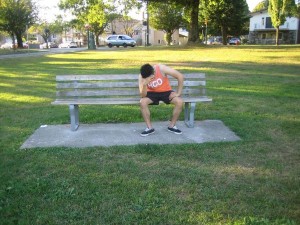A dislocated shoulder is considered as a common type of injury where the upper arm bone moves out of its designated socket which is part of the shoulder blade. It is important to note that the shoulder is the most mobile joint which makes it susceptible to being dislocated.
[youtube url=”https://www.youtube.com/watch?v=nwUKjDxrIPo”]If an individual has a dislocated shoulder joint, it can cause severe pain that can result to short-term disability and there is difficulty in moving the joint.
Symptoms
- A deformed or out of place shoulder. The dislocated shoulder loosely hangs lower than the unaffected area and a depression can be seen in the adjacent muscle of the shoulder.
- Bruising and swelling of the area
- There is numbness, tingling or weakness felt down the arm and to the hand.
- If the blood vessels are injured, the lower arm and hand of the affected area feels cold and becomes bluish in color.
- Severe pain
The dislocated shoulder loosely hangs lower than the unaffected area and a depression can be seen in the adjacent muscle of the shoulder. - Incapable of moving the joints
Causes
- Shoulder dislocation can be caused by injuries by playing contact sports such as football and hockey as well as sports that require downhill skiing, gymnastics and volleyball.
- A hard blow to the shoulder due to vehicular accidents can cause dislocation
- During a fall, it can cause dislocation of shoulder such as falling from a ladder and tripping on a loose rug.
Treatment
- Take plenty of rest especially the affected area. Avoid painful movements such as lifting or overhead activities until the shoulders are totally healed.
- Immobilize the arm in order to prevent the condition from getting worse. Make a sling using a piece of cloth. Place the sling under the elbow and forearm and tie the ends around the elbow and neck. A sling helps in immobilizing as well as protects the affected area from becoming worse and helps lessen the pain.
- Apply an ice pack or something cold on the dislocated shoulder joint immediately after the injury in order to minimize the inflammation and lessen the pain. Ice helps in constricting the amount of blood and inflammation that flows around the affected area. Wrap a few ice cubes in a piece of cloth or a towel and place it on the affected shoulder for at least 15-20 minutes at a time until the area becomes numb. Avoid applying ice directly into the skin in order to help prevent frostbite and irritation on the skin. If ice cubes are not available, a bag of frozen vegetables or a frozen gel pack is also helpful with the condition.
- When inflammation and pain is minimized, apply hot packs or a heating pad in order to help in relaxing tight and sore muscles for at least 20 minutes at a time.
- Take over-the-counter pain medications such as aspirin, ibuprofen and acetaminophen in order to help lessen the pain.
- Take the prescribed muscle relaxant medications in order to prevent spasms of muscles around the affected shoulder.

